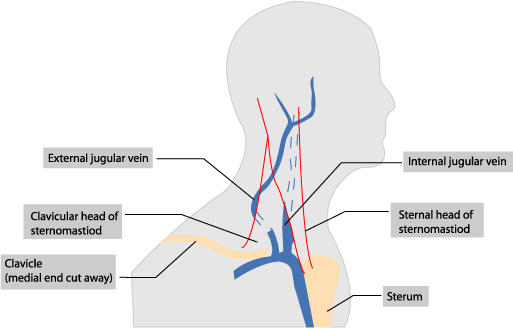jugular vein

The jugular vein is any of three veins on each side of the neck that return deoxygenated blood from the head to the heart. Of the three (internal, external, and anterior) by far the largest is the internal jugular, which corresponds to the common and internal portions of the carotid artery. It leaves the base of the skull as a continuation of the venous sinuses of the brain through a special foramen – in company with the ninth, tenth, eleventh, and twelfth cranial nerves and travels down the neck alongside the carotid artery, and passes behind the clavicle (collarbone), where it joins the subclavian vein (the large vein that drains blood from the arms) and forms the innominate vein.
There is no vein corresponding to the external carotid artery, but some veins from the face and scalp form the external jugular vein, which runs superficially over the sternomastoid muscle and pierces the deep fascia of the clavicle to enter the subclavian vein. Its tributary, the anterior jugular, runs down the front of the neck.
The proximity of the jugular veins to the surface makes them liable to trauma with hemorrhage and aeroembolism.
Jugular venous pressure (JVP)
Jugular venous pressure is the pressure in the internal jugular vein, which is an indirect measurement of central venous pressure (CVP) in the right atrium. In clinical practice the JVP is estimated by visual inspection at the bedside with the patient reclining at 45 degrees.


